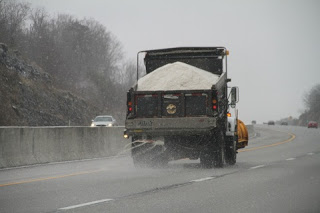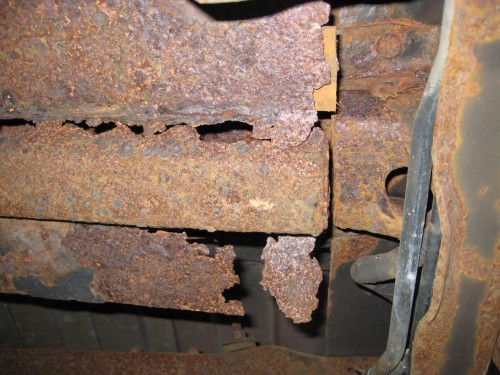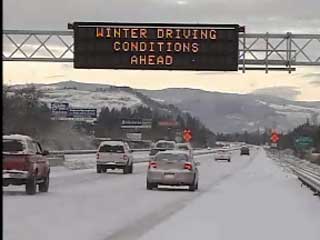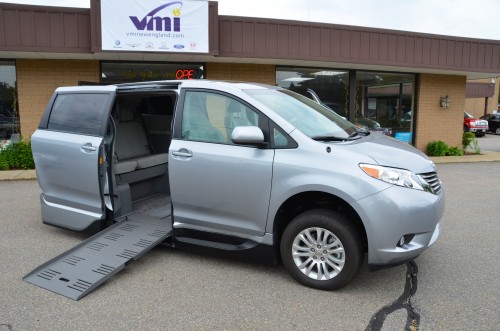VETERANS

If you need a wheelchair van (driver or passenger) you may be eligible for one at little to no out of pocket cost. We, too, are Veterans and understand your needs.
Click here to begin the VA process and receive guidance on getting your benefits.
The Auto Allowance Grant: This benefit provides eligible Veterans with flat rate federal grant of $19,505.00 towards the purchase of a wheelchair accessible vehicle. This grant is paid to the seller of the vehicle and must be approved by the VA before the purchase.
The Automobile Adaptive Equipment Program: This benefit provides eligible Veterans with funding (approximately $25,000) for equipment and training to enter, exit and/or operate a motor vehicle. This equipment includes but not limited to platform wheelchair lifts, kneeling systems, power door openers, lowered floors/raised roofs, raised doors, hand controls and braking and digital driving systems.
Non Service Connected Van Modifications: This benefit provides eligible Veterans with funding (approximately $25,000) for non-operational equipment for entry and exit to the van. Issuance of equipment is considered medical and is not included as part of the Automobile Adaptive Equipment Program.
“U.S. veterans make so many sacrifices for our freedoms,” said Doug Eaton, president of VMI. “We’re indebted for their service and believe our disabled vets should have easier access to mobility vehicles. That’s why we teamed up with Paralyzed Veterans and the VMI Select Dealer Network to establish Operation Independence. Through this national program, we’ll help raise awareness of the federal grant money that is available to our vets to help them purchase a new mobility vehicle. We’ll also explain how the national VMI Select Dealer Network can fast track their purchase of a quality mobility van and provide important vehicle maintenance after the sale.”
Operation Independence is a national program developed by VMI and is supported by the Paralyzed Veterans and The American Wheelchair Van Society. A portion of the program will educate veterans about Federal Grant 21-4502, which is available to disabled U.S. vets and was recently increased from $11,500 to $18,900. In addition to the grant, VMI is offering an additional $1,000 coupon that can be used as cash back from the manufacturer or applied toward a down payment for veterans who qualify for the 21-4502 grant and who have not previously taken advantage of the 21-4502 Auto Allowance Grant. The American Wheelchair Van Society will assist all Veterans through the process.
“We’ve found that a number of important government benefits like the 21-4502 program, which provides a grant towards the purchase of a mobility vehicle of their choice, are under-utilized by eligible veterans,” said Al Kovach, National Senior Vice President of the Paralyzed Veterans of America, and a former Navy SEAL. “This partnership with VMI’s Operation Independence is so important to as it supports Paralyzed Veterans’ Mission: ABLE campaign which enables severely disabled veterans to secure care, benefits and jobs and rebuild their lives. Together, we can leverage our efforts to improve mobility for disabled veterans by connecting them with the vehicles that fit their needs and ultimately help them achieve the independence and dignity they deserve.”
Paralyzed Veterans of America was founded by a group of seriously injured American heroes from the “Greatest Generation” of World War II. They created a nonprofit organization to meet the challenges head that they faced back in the 1940s — from a medical community not ready to treat them, to an inaccessible world. For more than 65 years, Paralyzed Veterans national office and 34 chapters across the nation have been making America a better place for all veterans and people with disabilities. (www.pva.org)
“According to the Dept. of Veterans Affairs, there are nearly 3.5 million veterans who now live with a service-connected disability,” said Doug Eaton, president of Vantage Mobility International. “Many of those disabled veterans struggle to find employment because they don’t have access to reliable transportation. So, in addition to supporting the Paralyzed Veterans of America national tour, we’ve also teamed up with Toyota Motor Sales USA to give all disabled veterans a chance to win a 2013 Toyota Sienna SE with our Access360 In-floor Ramp Conversion. We hope veterans in the Houston area will join us at Adaptive Driving Access in Houston to learn more about our Operation Independence Star Spangled Salute contest.”
‘The Big Push for Progress’ initiative was developed to honor Paralyzed Veterans and help local communities “take a stand for veterans and their families.”
Paralyzed Veterans of America, which is celebrating 67 years this year, is urging all Americans to take a stand for veterans. “Our disabled veterans face an unemployment rate three to eight times higher than average,” said Bill Lawson, U.S. Army veteran and national president of Paralyzed Veterans. “That’s just one reason I’m asking my fellow Americans to help redouble our efforts for positive change. We need everyone to be a part of our big push for progress.”
Click here to begin the VA process and receive guidance on getting your benefits.
 Freedom Fest 2014 is an outdoor concert on August 09, 2014 in Fort Kent, Maine to raise funds to build a Veterans Museum & community center in Northern Maine. A joint project of Martin-Klein American Legion Post 133 and the Fort Kent Historical Society, more information is available at www.IamtheAmericanFlag.com
Freedom Fest 2014 is an outdoor concert on August 09, 2014 in Fort Kent, Maine to raise funds to build a Veterans Museum & community center in Northern Maine. A joint project of Martin-Klein American Legion Post 133 and the Fort Kent Historical Society, more information is available at www.IamtheAmericanFlag.com Actor, Singer and Songwriter: Most famous for Henry Rowengartner in Rookie of the Year
Actor, Singer and Songwriter: Most famous for Henry Rowengartner in Rookie of the Year






